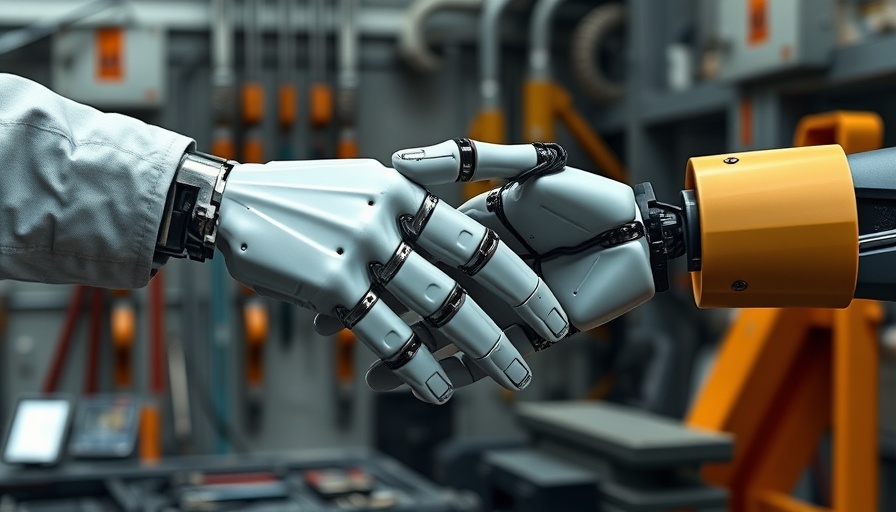
Revolutionizing Robotics: A Skin That Feels
In a striking breakthrough, researchers from the University of Cambridge and University College London have developed a low-cost, ultra-sensitive robotic skin that closely mimics the human touch. Unlike traditional robotic solutions that utilize a mosaic of sensors, this innovative material encompasses the entire surface of robotic hands, allowing for simultaneous detection of pressure, temperature, and pain. Imagine robots that can genuinely 'feel' the world around them—this new technology signals a profound leap towards that reality.
How Does This Advanced Skin Work?
This electronic skin is crafted from a flexible gel material, functioning as a singular sensor network with over 860,000 pathways. Such sensitivity allows for the differentiation of various sensations—whether it’s a gentle tap or the heat of a hot surface. This system means robots can now interact more intelligently with their environment, facilitating applications ranging from humanoid robotics to life-saving roles in disaster relief.
The Future of Robotics: More Human-like Interactions
The applications of this technology extend beyond simple robotics. As industries around the globe—like automotive and healthcare—embrace automation, this enhanced sensitivity might usher in a new era where robots become integral to daily human activities. With seamless human-robot interaction, such innovations pave the way for safer, more responsive technological solutions that address pressing societal needs.
Potential Challenges and Ethical Considerations
Despite the promising prospects, the introduction of sensitive robotic skin raises pertinent questions regarding ethical implications. As robots grow more adept at interaction, society much consider the emotional and social ramifications of machine empathy. How will we navigate relationships with humanoid robots? This evolution in robotics necessitates careful dialogue on ethical parameters and ensuring boundaries are respected.
Why Your Interest Matters
For tech enthusiasts, developers, and industry professionals, understanding the development of such technologies can spark innovative ideas and collaborations. This robotic skin exemplifies a key aspect of next-gen technology—how our creations evolve to integrate better into human life. By staying informed about these advances, individuals in tech-focused careers can better position themselves to leverage these breakthroughs in their respective fields.
As we explore the future of robotics together, consider how this sophisticated robotic skin could reshape industries and daily life. It's not just science fiction; it’s happening now. Get ready to engage with the world of tomorrow!
 Add Row
Add Row  Add
Add 




 Add Row
Add Row  Add
Add 



Write A Comment